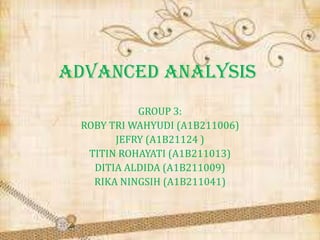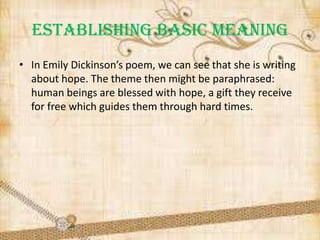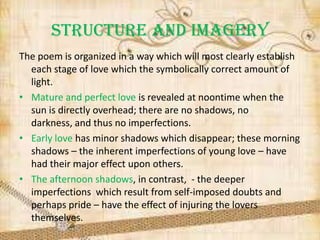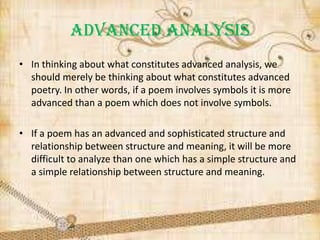This document provides an overview of advanced poetic analysis techniques. It discusses establishing the basic meaning of a poem before probing less obvious aspects. It emphasizes asking questions about word choices, structure, imagery, and their relationship to meaning. The document also covers analyzing literary debts and influences, determining an author's style through devices like expansion and contraction. It discusses analyzing symbolism and how poets represent one world through another. The overall aim is to analyze poetry to the fullest extent by asking every possible question.





























